St. Petersburg Online
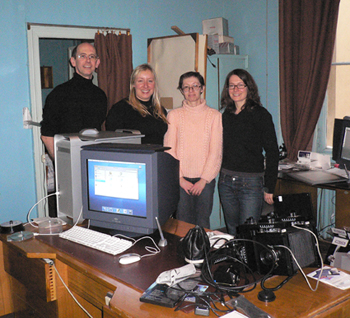
We are delighted to announce the launch of the IDP web site in Russian hosted by the Institute of Oriental Studies, St. Petersburg branch of the Russian Academy of Sciences.
The Institute has a long history of scholarship and its collection of manuscripts and early published books consists of more than 100 thousand items, making it the largest manuscript collection in Russia and one of the two or three largest and most valuable collections of Eastern manuscripts in the world. It includes items in 65 living and dead languages including Chinese, Mongolian, Persian, Tajik, Sanskrit, Sogdian, Uighur, Tangut and Tibetan. The Institute’s specialist library contains 800,000 books and its 100 members publish 30-40 monographs and 250-300 articles a year.
An article on the history of Russian expeditions to Central Asia is now available on the IDP website. Over the coming months we will be increasing the Russian resources on the database, adding more information about the collections and bibliographies. Catalogue entries of the Dunhuang manuscripts are already available online, more being added daily, and will soon be joined by images as the manuscripts are conserved and digitised.
A Journey of Exploration: Objets d’Arts of the Museum of Indian Art, Berlin, in the State Hermitage, St.Petersburg
Marianne Yaldiz
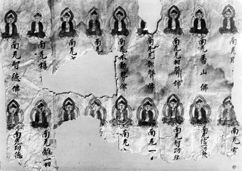
In 2002 the catalogue of art objects lost in and after World War II was finally completed after several years of intense investigation.1 Although there were numerous sources, the research involved many difficulties because much of the information in the card indexes and in the inventory books was incomplete. Irreplaceable aids for identification were the original glass plates which remain part of the Museum’s photographic archive. Every clue on the identification of the lost objects was taken into consideration however little information it might offer.
Since the founding of the Museum of Indian Art (Museum für Indische Kunst) as an independent institution of the State Museums-Prussian Cultural Foundation in 1963, the Indo-Asian collections have been part of the Indian department of the Ethnological Museum (Museum für Volkerkunde). As early as 1934 with premonition of the impending disaster of another World War, the curators of the Indian Department started salvage operations by compiling lists categorizing the collections into the groups, irretrievable, particularly valuable and others. In 1938 a large number of objects belonging to the first two categories were packed and shifted to cellars and air-raid shelters in Berlin. After the bombings in 1940 large parts of the collection were prepared for transport to safer buildings and, in 1944, the Central Asian Turfan Collection was moved to several salt mines in Germany. But despite these comprehensive evacuations, many art objects remained in the Museum’s cellars. With hindsight, the decision to leave the 7 x 5 m wall paintings from Bezeklik in the Museum protected only by sand bags was a fateful one: all were destroyed in the bombing.
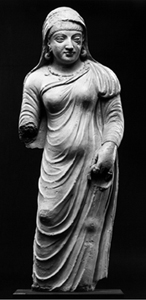
In 1956 the return of the objects from the ‘Central Art Collection Point’ in the cities of Wiesbaden and Celle began, and it was only concluded a year later. But, although many prestigious art objects were retrieved, there were deplorable losses. More than 2,000 accession numbers comprising an even greater number of objects as well as 8,000 books from the library were not among the returned objects.
In 1985 rumours started that parts of the collection had been transported to Leningrad (St. Petersburg) and, from there given to the Grassi Museum in Leipzig in 1978. Between 1990 and 1992, following the reunification of Germany, crates containing 55,000 objects were returned from Leipzig to Berlin. The Museum of Indian Art retrieved 257 objects including stucco sculptures from Gandhara among them the beautiful statue of Hariti, now on display and 195 Central Asian manuscripts and architectural fragments.
The lost objects belong to the three main departments of the Museum; India, Southeast Asia and Central Asia. 452 objects from India are missing, including the best sculptures from the Gandharan region and from Eastern India as well as several miniature paintings; 83 from Southeast Asia, among them the monumental statues from Java; and 1562 from Central Asia (Turfan Collection), including wall paintings, sculptures, textiles and manuscripts.
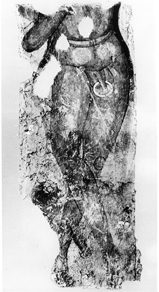
In autumn 2002 the Director and a conservator of the Museum were invited by the Director-General of the State Hermitage Museum in St. Petersburg to view the Berlin collections of Indo-Asian art in the Hermitage stores. Photographs were not allowed. The work started with the identification of the stone sculptures which are in relatively good condition. Of the 74 Indian and Southeast Asian statues viewed, 56 could be identified by means of the existing Berlin photographs. The remaining 18 are not documented as lost although they belong, without doubt, to the collection of the Museum of Indian Art because some of the German accession numbers are still visible on them.
The losses of the Berlin Central Asian Collection parts of which are also now to be found in the Hermitage are more comprehensive. Unfortunately the manuscripts and textiles, and especially the fragile wall paintings, are in a poor state of preservation. They remain in their original boxes and frames but the objects have been damaged and become dirty. 294 pieces from the Turfan Collection were discovered during our visit to St. Petersburg of which 50 were identified, but a further visit would most probably enable us to identify even more.
Since the objects in the State Hermitage Museum form only one fifth of the objects lost from Berlin it may be supposed that other parts are housed in other museums in Russia.
Dr. Marianne Yaldiz is Director of the Museum für Indische Kunst, Berlin.
1. Museum für Indische Kunst. Dokumentation der Verluste, Band III. Staatliche Museen zu Berlin-Preußicher Kulturbesitz 2002.
Archaeological Finds from Khotan in the State Museum of Ethnography in Munich
Ulf Jäger
Unknown to a larger international scholarly public, the State Museum of Ethnography in Munich (Staatliches Museum für Völkerkunde München) houses a large collection of archaeological finds from Khotan the Francke Körbe Collection.
This collection was made by the former Professor of Tibetology at Berlin, Dr. August Hermann Francke, and the Sinologist Dr. Hans Körber by order of the Director of the Königlich Ethnographisches Museum München, Prof. Dr. Lucian Scherman, in 1914 during an expedition to Central Asia. However, most items were purchased from local antique-dealers rather than excavated by the expedition members.
The collection consists of Yotkan terracottas, Buddhist stuccos, metal utensils (parts of rings, spoons, bracelets, belt-fittings etc.), coins (Chinese, Sino-Kharosthi, Kushan and Islamic), semi-precious stones, intaglios, glass-beads, and horn and wood objects. It also contains a considerable number of manuscripts in various scripts and languages, including Brahmi, Kharosthi, Chinese, and Tibetan. The collection contains a total of 1200 – 1400 items, but most of these are small.
News of the outbreak of the First World War reached the expedition only in the high mountains of Ladakh on their return journey and, as German citizens, they were taken as prisoners-of-war by British-Indian troops and sent to a POW camp in Ahmednagar (Maharashta State, India). This meant that they were separated from the collection.
Francke and Körber had left the collections well-packed at the Swedish Missionary House in Kashgar. Their own incarceration resulted in the collection having a very interesting and adventurous history before it finally reached Berlin, from where it was sent on to Munich in 1928.
Francke then made a preliminary study of some manuscripts, but his death in 1930 saw the end of study of this collection and it fell into a deep sleep. It was only awakened when re-discovered in the State Museum of Ethnography by the German Iranist Dr. Gerd Gropp of Hamburg University. Author of Archäologische Funde aus Khotan / Chinesisch-Ostturkestan. Die Trinkler-Sammlung im Übersee-Museum in Bremen (Bremen 1974), Dr. Gropp began cataloguing. However, after his retirement he started work on excavations south of Penjikent in Sogdia (modern Tajikistan) and had no time to complete his cataloguing. I had recently completed my dissertation at the University of Münster, Westfalen and Dr. Gropp asked if I would continue research on the collection. This I agreed and in the same year, 2003, the new Director of the State Museum of Ethnography in Munich, Dr. Claudius Müller, and the curator of the Central and East Asian Department, Dr. Bruno Richtsfeld, also agreed to this. In October 2004 I spent 10 days in the archives of the Museum in order to study the adventurous history of the Francke Körber Collection.
I am now seeking funding for research and publication of this collection and I would particularly welcome contact with Chinese archaeologists in Xinjiang in order to compare the Collection with finds made at Khotan since 1949. I would like my research not only to provide a simple description of the collections, but also to contribute to a cultural history of Khotan in pre-Islamic times, and I welcome any advice or help from scholars in the field.
Dr.des.phil.Ulf Jäger, Bergstrasse 8, D-48599 Gronau-Epe / Westfalen Germany. Email : [email protected]
Stein in the UK, Hungary and India
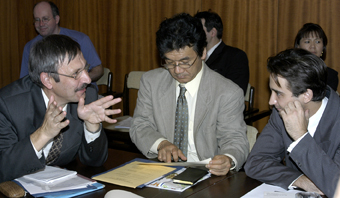
2004 was a year of events celebrating the scholarly achievements of Aurel Stein. The exhibition at the British Library, The Silk Road: Trade, Travel, War and Faith, and its associated publications and events (see IDP News 24) concentrated on Stein’s archaeological work in Central Asia, and two conferences considered these collections and their cataloguing. The publication of Money on the Silk Road by Helen Wang (see publications) for the first time made available a complete catalogue of all the Stein coins in the British Museum. In addition, two other initiatives, a conference and a digitisation project, concentrated on Stein’s scholarship in South Asia and Kashmir.
In October the Library of the Hungarian Academy of Sciences organised a conference ‘The Collections of Sir Aurel Stein and Alexander Csoma de Korös in the Oriental Collections: State of Cataloguing’ and invited scholars from Hungary, Britain, Japan and Russia to present papers on their cataloguing work and discuss future collaboration.
This was the culmination of a joint Stein cataloguing project organised by Èva Apor of the Hungarian Academy of Sciences and Helen Wang of the British Museum, which resulted in Catalogue of the Collections of Aurel Stein in the Hungarian Academy of Sciences (Budapest 2002) and both gave papers. John Falconer and Lilla Russell-Smith, who catalogued the Stein photographs for this volume, also attended the workshop and gave presentations.
More Stein material has recently been found in the Library and ágnes Kelecsényi of the Oriental Collection talked about a second phase of the cataloguing project to incorporate this material. Meetings were also held with IDP to discuss a collaborative digitisation project.
The Hungarian Cultural Centre, New Delhi was responsible for the second conference, held on 14-15 December and entitled ‘The Material Legacy of Sir Aurel Stein and its Documentation’. Speakers came from India, Hungary and the UK.
A conference held March 6-7 at de Montfort University in Leicester, UK, was entitled ‘The South Asian Legacy of Sir Aurel Stein,’ and organised by PRASADA (South Asian Arts) De Montfort University in collaboration with Circle of Inner Asian Art, University of London. It attracted speakers from India, Pakistan, Hungary, Germany, the US and UK to talk on Stein and South Asian collections, texts, art and archaeology.
Another initiative was launched at the Indian High Commission in London on December 17 to digitise Stein’s Kashmiri manuscripts. The project is organised by the Kashmir Bhawan Centre, Luton in partnership with the Bodleian Library, Oxford University and the government of Jammu and Kashmir, and made possible by a grant from the UK Heritage Lottery Fund.
IDP Team at the V&A
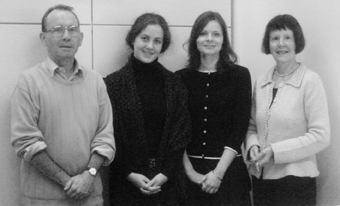
The Victoria and Albert Museum, London has now completed work on cataloguing and photographing Silk Road textiles in their collection, work funded by the Andrew W Mellon Foundation for their Mellon International Dunhuang Archive.
The V&A houses over 700 textiles, found by the archaeologist Marc Aurel Stein and on loan from the Government of India. Over the coming months the textiles will also be made available on the IDP website. Many of the textiles can also currently be seen via the V&A’s Access to Images public database. Please go to http://images.vam.ac.uk and type in ‘Stein’. For further information on the work that has been carried out by the V&A please contact the team:
email: [email protected]
tel: +44 (0)20 7942 2244
Forthcoming Conferences
An International Workshop on Ancient Central Eurasia and Chinese Culture
Shanghai
June, 2005
This workshop will investigate the relations between Central Eurasian cultures and Chinese ones, the internal connections among various parts of Central Eurasia, as well as the form, course and effect of Silk Roads, especially of the Steppe Roads. Details:
Institute of History, SASS
1610 West Zhongshan Road
Shanghai, 200235, CHINA
tel:
+86 (0)21 6428 9620 Zhang Qimin
(0)21 6427 5847 Rui Chuanming
email:
[email protected]
[email protected]
Kinship in the Altaic World Permanent International Altaistic Conference 48th Meeting
The Centre for International Cooperation Olimpiets near Moscow, Russia
July 10-15, 2005 Details:
Secretary General
Indiana University
Goodbody Hall 157
1011 E. 3rd Street
Bloomington
IN 47405-700, USA
tel: +1 812 855 0959
fax: +1 812 855 7500
email:
[email protected]
China’s 2nd International Conference on Tangut Studies
Yinchuan, China
August, 2005 Details:
Yangyan, Organizing Group
International Conference on Tangut Studies
Ningxia Academy of Social Sciences
Xixia District, Yinchuan
Ningxia 750021, CHINA
tel: +86 (0)951 2088814
email:
[email protected]
[email protected]
website:
http://www.nxnews.net/1168/2004-12-6/[email protected]
Cultural Diversity and Interaction in Ancient Eastern Central Asia
The 2005 International Symposium on Turfanological Studies
Turfan, Xinjiang, China
August 25-29, 2005 Details:
Mr. Hui Ouyang
Turfan Museum
224 Gaochang Road
Turfan, Xinjiang, CHINA
tel: +86 (0)995 8523556
fax: +86 (0)995 8532495
email:
[email protected]
Central Asia The Local, Regional and Global European Society for Central Asian Studies 9th Conference
Jagiellonian University
Krakow, Poland
September 12-14, 2005 Details:
ESCAS IX
Institute of Oriental Philology
Jagiellonian University
Al. Mickiewicza 9/11
31-120 Krakow, POLAND
fax: +48 12 4226793
email:
[email protected]
International Summer School in Central Asia
Kyrgyzstan-Turkey MANAS University
Bishkek, Kyrgyzstan
July 13-31, 2005
Application deadline: May 1, 2005
Estimated program cost: USD1,100 to USD1,800 per participant according to accommodation. The fee will cover all costs of tuition and materials, accommodation, meals, excursions, and transportation inside Kyrgyzstan. Participants will be asked for the advance payment of 10% of the total fee upon confirmation of their participation.
Details:
Samara Turdalieva
Executive Secretary of the International Summer School
Mira Avenue 56
720042, Bishkek, KYRGYZSTAN
email:
[email protected]
website:
http://www.summerschool.manas.kg
Journals
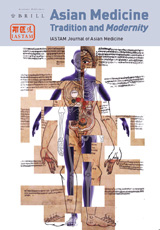
Asian Medicine Tradition and Modernity
Journal of the International Ass. for the Study of Traditional Asian Medicine
Ed. by Waltraud Ernst and Vivienne Lo
A new multidisciplinary journal aimed at researchers and practitioners of Asian medicine.
Order from:
Emma Ford,
Wellcome Trust Centre for the History of Medicine at UCL
210 Euston Road,
London NW1 2BE,
UK email:
[email protected]
website:
http://www.iastam.org/journal.htm
Bulletin of the Asia Institute 15
Includes articles by Prof. Skjærvø on a Khotanese document and Prof. Sims-Williams on Bactrian Legal Documents.
Order from:
Bulletin of the Asia Institute
3287 Bradway Blvd.
Bloomfield Hills
MI 4830
USA
tel: +1 248 647 7917
fax: +1 248 647 9223
email:
[email protected]
New Perspectives in Eurasian Archaeology
Bulletin of the Museum of Far Eastern Antiquities (BMFEA) 75
Ths volume is a result of the IIAS-ASEF sponsored symposium at the Museum in late 2003 in commemoration of the museum’s founder, Johan Gunnar Andersson, and his explorations of the archaeology of prehistoric East-West contacts.
email:
[email protected]
website:
http://www.ostasiatiska.se
Recent Publications
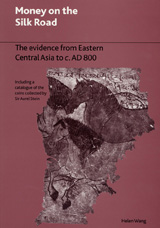
Money on the Silk Road
The Evidence from Eastern Central Asia to c. AD 800
Including a catalogue of coins collected by Sir Aurel Stein
Helen Wang
London: The British Museum Press, 2004
308 pp. b&w ills. maps, index and catalogue
GBP65 (pb)

Art, Religion and Politics in Medieval China: the Dunhuang Cave of the Zhai Family
Ning Qiang
University of Hawaii Press, 2004
178 pp., colour and b&w plates
USD39 (hb)
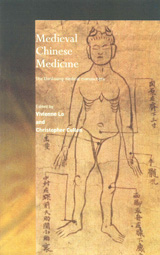
Medieval Chinese Medicine: The Dunhuang Medical Manuscripts
Eds. Vivienne Lo and Christopher Cullen
Needham Research Institute Series,
London: RoutledgeCurzon 2005
472 pp., illus, 29 line drawings, 10 tables, 19 plates
GBP65
China: Dawn of a Golden Age 200-750 AD
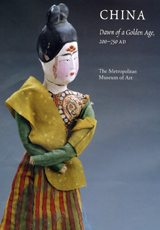
James C. Y. Watt
Published in conjunction with the exhibition of the same name at The Metropolitan Museum of Art, New York
October 12, 2004 – January 23, 2005
New York, MMA, 2004
488 pp., 500 ills. (400 in colour)
USD75 (hb), USD50 (pb)
Turks
A Journey of a Thousand Years, 600-1600
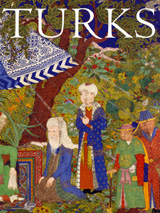
Ed. David J. Roxburgh
Published in conjunction with an exhibition of the same name at the Royal Academy, London, January 22 – April 12, 2005.
London: The Royal Academy 2005.
496 pp., ills. GBP27.95 (pb)
GBP50 (hb)
Mapping the Silk Road and Beyond
2,000 Years of Exploring the East
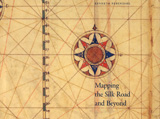
Kenneth Nebenzahl
London and New York: Phaidon Press, 2004
176 pp., colour and b&w plates
GBP29.95 (hb)
Obituary: Nadezhda Mironovna Brovenko (1946-2003)
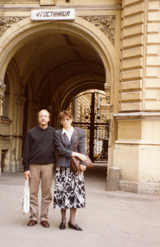
Born 26th August 1946 in Leningrad and in 1978 she graduated from the St.-Petersburg I. E. Repin Institute of Painting, Sculpture and Architecture (Russian Academy of the Fine Arts). In 1980 she started work as a bookbinder and then became a paper conservator at the Institute of Oriental Studies of the Russian Academy of Sciences, St. Petersburg.
She attended the course of parchment conservation at the Matenadaran (Erevan, Armenia) and in 1991 was attested as a high qualified conservator-painter. She has done great service in the field of conservation of the rarest and the most difficult polyglot fragments and scrolls originating from Turfan and Dunhuang.
In 1991 she met with Peter Lawson, then Head of the Oriental Conservation Studio at the British Library, and thus began a collaboration which continues today. She first came to the British Library in 1992 and worked first with Peter Lawson and thereafter with Mark Barnard (pictured left with Nadia in St. Petersburg). This included a period in Lugano (Switzerland), carrying out paper conservation.
All the conservators who worked with her at the British Library will remember Nadia as a very warm and caring person, a jolly good cook, and someone who, with her husband, had great interests in art and music.
She made valuable contributions at IDP conservation conferences, and I am sure that if it were not for her illness, she would have continued to look for ways to improve her studio and conservation methods. She was far too young to go. We all miss her very much.
Staff of the BL Conservation Studio
Project News
Cataloguing, Conservation and Digitisation
Following conservation of Sanskrit and Tangut fragments in London, over the coming year these two groups of manuscripts will be digitised and made available on the web site for cataloguing. Conservation and digitsation work will also continue on Chinese and Tibetan manuscripts from Dunhuang, and start on Khotanese. Digitisation of the Chinese woodslips from Stein’s first expedition is almost complete, and work was also completed in 2004 on all the wood shavings collected by Stein and all his site plans. These latter will be incorporated into improved site pages on the new IDP website later this year.
IDP is preparing to map its existing catalogue records into XML and enable a full text search on the database. During 2005 records from recently published catalogues, such as Professor Skjærvø’s work on Khotanese manuscripts and Professor Takeuchi’s catalogue of Tibetan manuscripts, will be added to the database, also in XML and fully-searchable format. Transliterations and translations will also start to be added, in fully-searchable format, and scholars will be encouraged to send IDP electronic versions of their work for immediate inclusion with accreditation.
In 2004 IDP in its centres in London and Beijing digitised almost 4,000 manuscripts, photographs and artefacts, comprising over 23,000 images, all freely-available online. It is planned to upgrade digitisation equipment in London and China later this year, funds allowing, which will at least double the number of images being produced.
From summer 2005 regular reports of the latest material catalogued, digitised and newly available on the web database will be posted on the IDP website.
IDP Website
The IDP website is currently being redesigned to give increased functionality and more flexible searches. The new site will be ready for testing next month and will go live later this year. It will incorporate a new web space ‘MY IDP‘ on which users can create their own projects, with links and notes. In the summer a new educational resource, ‘Buddhism in Central Asia’, will be launched in this space, and future resources will include ‘Languages and Scripts of Central Asia’ and ‘Conservation of Central Asian Manuscripts’.
IDP Conference
The next IDP Conservation Conference will be hosted by the National Library of China and held in Beijing from 22-24 April, 2005. The conference will start with a public session, after which the small workshops are for invited conservators only. A full report will be given in the autumn edition of IDP News.
People
Zhang Zhiqing and Lin Shitian of the National Library of China were invited to London for a week-long study visit in January 2005. During their stay the expansion of the IDP activities in China were discussed and agreed. IDP is currently seeking funds to cover the expansion of the digitisation studio in China to enable all the Dunhuang manuscripts and some other collections to be digitised by 2010.
Svetlana Shevelchinskaya (Photographer), Anna Belova (inputter), Natasha Tereshova (inputter) and Konstantin Matekhin (Computer Support Engineer) from the Institute of Oriental Studies, St. Petersburg, visited IDP London for a one-week training visit at the end of January 2005. Four London IDP staff returned with them at the end for a week to set up the digitisation studio in Russia, prepare the website (see previous article) and continue training.
The Library welcomed numerous other scholars to the Reading Room over 2004 to work on the Central Asian manuscripts. Scholars are reminded that they need to give Library staff sufficient notice of any visit as all manuscripts have to be checked in advance. An online form is available.
Collaborations
IDP at the British Library and the Victoria and Albert Museum finalised an agreement for IDP to prepare the images of Stein textiles for inclusion on the IDP database. The textiles were all digitised in 2004 (see previous report). News of when they become live on IDP will be posted on the web site and in the newsletter.
Following an agreement between Academia Sinica, Taiwan and IDP, the 49 Dunhuang manuscripts in the Fu-Ssu Nien Library Academia Sinica collection were digitised in 2004 and received by IDP for checking and mounting on the web site, along with cataloguing data. These will go live in the next couple of months.
Following the Stein and Csoma de Korös conference in November (see previous article) talks were held with the Hungarian Academy of Sciences in Budapest about a joint project to digitise the large collection of Stein photographs of Central Asia in the HAS Library and to make them available on the IDP database. It is hoped to start this project by summer 2005.
Work continues on the digitisation of Dunhuang manuscripts in Japan and the preparation of a Japanese web site. Progress will be reported in the next newsletter.
IDP’s collaboration with ‘Medicine, Religion and Society‘, a four-year Wellcome Trust-funded project to catalogue and research the Dunhuang medical manuscripts, culminated with publication of the research papers (see publications ). Research carried out by the members of the project included a research visit to the British Library and the Bibliothèque nationale de France in summer 2000 by Professor Xiu Guihua, Dr Zhao Pingan, Dr Liu Lexian and Wang Shumin from the history departments at the Chinese Academy of Social Sciences and the Academy of Research Into Chinese Medicine. The project members gave papers at a conference held in September 2000 (IDP News 15 & 16).
Education
Over the last decade, IDP has built up a substantial resource base, and the emphasis for the next five years is to utilise this to build greater awareness of Central Asian and Chinese history and culture worldwide. It will do this by building up the expertise among scholars and school teachers by providing them with resource materials so that they feel confident about offering courses in these areas. IDP resources will be made more accessible through the provision of personalised web space, music, maps, photographs, video clips, and translations. Tailored resource packs in local languages will be made available for the benefit of teachers, schoolchildren and students worldwide. IDP will seek to build new partnerships, particularly those based in China and Central Asia, to achieve these aims.
Funding is now being sought by IDP for specific educational initiatives which include: the development of web-based resources for university students across the world; resource packs for primary school teachers in China; and internships for Chinese and Central Asian scholars and students.
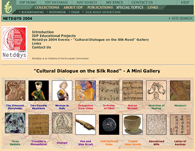
IDP is currently collaborating with the Gansu Basic Education Project, which has been establishing teachers’ resource centres in the poorest townships of Gansu Province, China, since 1999. Alastair Morrison of IDP has compiled a CD with stories, sounds, images, and film from the Silk Road, concentrating on Gansu’s own history, and this will be distributed free to the resource centres. This will enable teachers to incoporate elements of local history and culture into their lessons.
Following on from the success of the educational programme of the Silk Road exhibition (see IDP News 24), IDP participated in Netd@ys 2004, a European Commission initiative to bring together organisations across Europe that are involved in online learning and education. Netd@ys week ran from 22-27 November, 2004, during which special events were held all over Europe on the theme of ‘Dialogue and Image’. Gizella Dewath of IDP mounted an online mini exhibition, entitled ‘Cultural Dialogue on the Silk Road‘ (see left). Sixteen artefacts were chosen from exhibition which reflect cultural diversity and interaction on the Silk Road.
Appeal
Thanks to all of you who have responded so generously to our Project Appeal (see IDP News 24). We have had an excellent response and the funds will help continue our exciting programme of work.
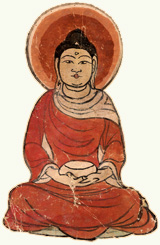
We still have a considerable way to go in reaching our target for 5 years of USD4 million. Although we expect to raise much of this through foundational support, all funds raised through appeal help in our applications to foundations and also give us flexibility to carry out small, otherwise unfunded projects or to follow up initiatives.
You can help by sponsoring a sutra, as many did at Dunhuang through the ages, on our new system. You can make your choice of sutra online, add your dedication, arrange credit card payment and your dedication will appear on the IDP web site. If you wish to make an online donation directly please contact us.
This digital version of IDP News is based on the print version of the newsletter and some links and content may be out of date.
This issue, No. 25, was published Spring 2005.
Editor: Susan Whitfield
Picture Editor: Vic Swift
ISSN 1354-5914
All text and images copyright their creators or IDP, except where noted. For further information on IDP copyright and fair use, please visit our Copyright page.
For further information about IDP please contact us at [email protected] or visit our Contact page.